当前位置:网站首页>Dichotomy search (C language)
Dichotomy search (C language)
2022-07-04 10:27:00 【Lol only plays Timo】
Finding this work is the operation we often have to do with a pile of data , As we know, the time complexity of sequential search will greatly increase when there is more data, which will seriously affect the running speed of our program , So is there an algorithm with excellent time complexity to solve this problem —— Two points search
Let's first talk about what is binary search , Let's see how its manual process is realized .
Binary search is to increase the original linear time to logarithmic time , It greatly shortens the time to find the target data , But the biggest disadvantage of binary search is that the data to be checked must be orderly , That is to say, when we use binary search, we should first sort our data , Sorting is inherently time-consuming , So when we choose sorting algorithms, we should choose ones with less time complexity, such as quick sort and heap sort , In this article, I will use quick sort to prepare for binary search , Students who are not very familiar with quick sorting can see my previous article .
Let's take a look at the manual process of binary search , To fully understand how this binary search reduces the time complexity of the program .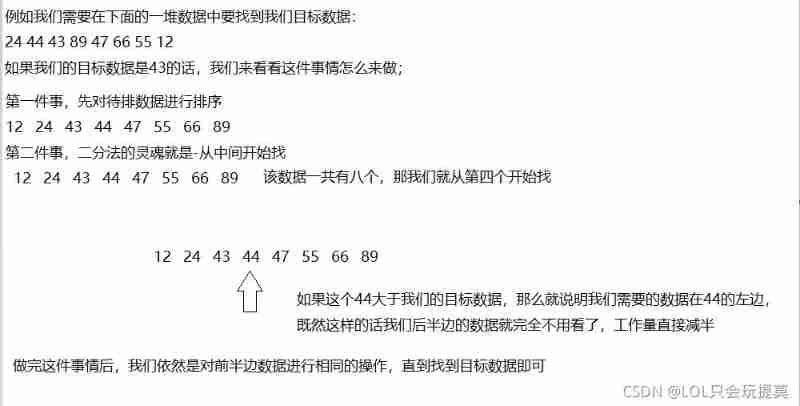
With this process, programming becomes very simple :
int binarySearch(int *array, int count, int targetNum) {
int head;
int tail;
int middle;
head = 0;
tail = count + 1;
middle = (head + tail) / 2;
while (head < tail) {
if (array[middle] < targetNum) {
head = middle;
middle = (head + tail) / 2;
} else if (array[middle] > targetNum) {
tail = middle;
middle = (head + tail) / 2;
} else if (array[middle] == targetNum) {
return middle;
}
}
return NOT_FOUND;
}
Now we put the whole code into the program , Take a look at the complete code :
#include <stdio.h>
#include <malloc.h>
#include <time.h>
#include "tool.h"
int *creatarrayay(int minValue, int maxValue, int count);
void showarrayay(int *array, int count);
void swapOnce(int *array, int start, int end);
void quickSort(int *array, int count);
int binarySearch(int *array, int count, int targetNum);
int binarySearch(int *array, int count, int targetNum) {
int head;
int tail;
int middle;
head = 0;
tail = count + 1;
middle = (head + tail) / 2;
while (head < tail) {
if (array[middle] < targetNum) {
head = middle;
middle = (head + tail) / 2;
} else if (array[middle] > targetNum) {
tail = middle;
middle = (head + tail) / 2;
} else if (array[middle] == targetNum) {
return middle;
}
}
return NOT_FOUND;
}
void quickSort(int *arrayay, int count) {
swapOnce(arrayay, 0, count-1);
}
void swapOnce(int *arrayay, int start, int end) {
int i = start;
int j = end;
int temp = arrayay[i];
if (i >= j) {
return;
}
while (i < j) {
while (i < j && arrayay[j] > temp) {
j--;
}
if (i < j) {
arrayay[i++] = arrayay[j];
}
while (i < j && arrayay[i] < temp) {
i++;
}
if (i < j) {
arrayay[j--] = arrayay[i];
}
}
arrayay[i] = temp;
swapOnce(arrayay, start, i - 1);
swapOnce(arrayay, i + 1, end);
}
void showarrayay(int *arrayay, int count) {
int index;
for(index = 0; index < count; index++) {
printf("[%d] ",arrayay[index]);
}
printf("\n");
}
int *creatarrayay(int minValue, int maxValue, int count) {
int index;
int value;
int *arrayay;
srand(time(0));
arrayay = (int *) calloc(sizeof(int), count);
for (index = 0; index < count; index++) {
value = rand() % (maxValue - minValue + 1) + minValue;
arrayay[index] = value;
}
return arrayay;
}
int main() {
int *array = NULL;
int maxValue;
int minValue;
int count;
int index;
int targetNum;
printf("please input minValue/maxValue/count:");
scanf("%d%d%d", &minValue, &maxValue, &count);
array = creatarrayay(minValue, maxValue, count);
printf("after sorting:\n");
quickSort(array, count);
showarrayay(array, count);
printf("input targetNum:");
scanf("%d",&targetNum);
index = binarySearch(array, count, targetNum);
if (NOT_FOUND == index) {
printf("Not found!\n");
} else {
printf("At : %d\n", index + 1);
}
free(array);
return 0;
}
int *creatarrayay(int minValue, int maxValue, int count);
void showarrayay(int *array, int count);
The first function is to input the maximum value of the array , The minimum value and the size of the array can automatically generate an array , It saves us the trouble of inputting data frequently ;
The second is to print the array on the screen .
void swapOnce(int *array, int start, int end);
void quickSort(int *array, int count);
This is the function of quick sort .
Now let's take a look at the operation of the program and the results 
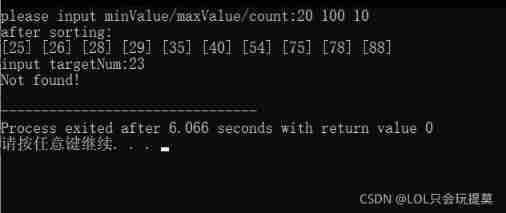
notes :tool.h
#ifndef _TOOL_H_
#define _TOOL_H_
typedef unsigned char boolean;
#define TRUE 1
#define FALSE 0
#define NOT_FOUND -1
#endif
Thank you for reading !
边栏推荐
- How do microservices aggregate API documents? This wave of show~
- What is devsecops? Definitions, processes, frameworks and best practices for 2022
- Rhcsa12
- Rhsca day 11 operation
- Service developers publish services based on EDAs
- MySQL case
- [untitled]
- Two way process republication + routing policy
- Exercise 7-4 find out the elements that are not common to two arrays (20 points)
- Idea SSH channel configuration
猜你喜欢
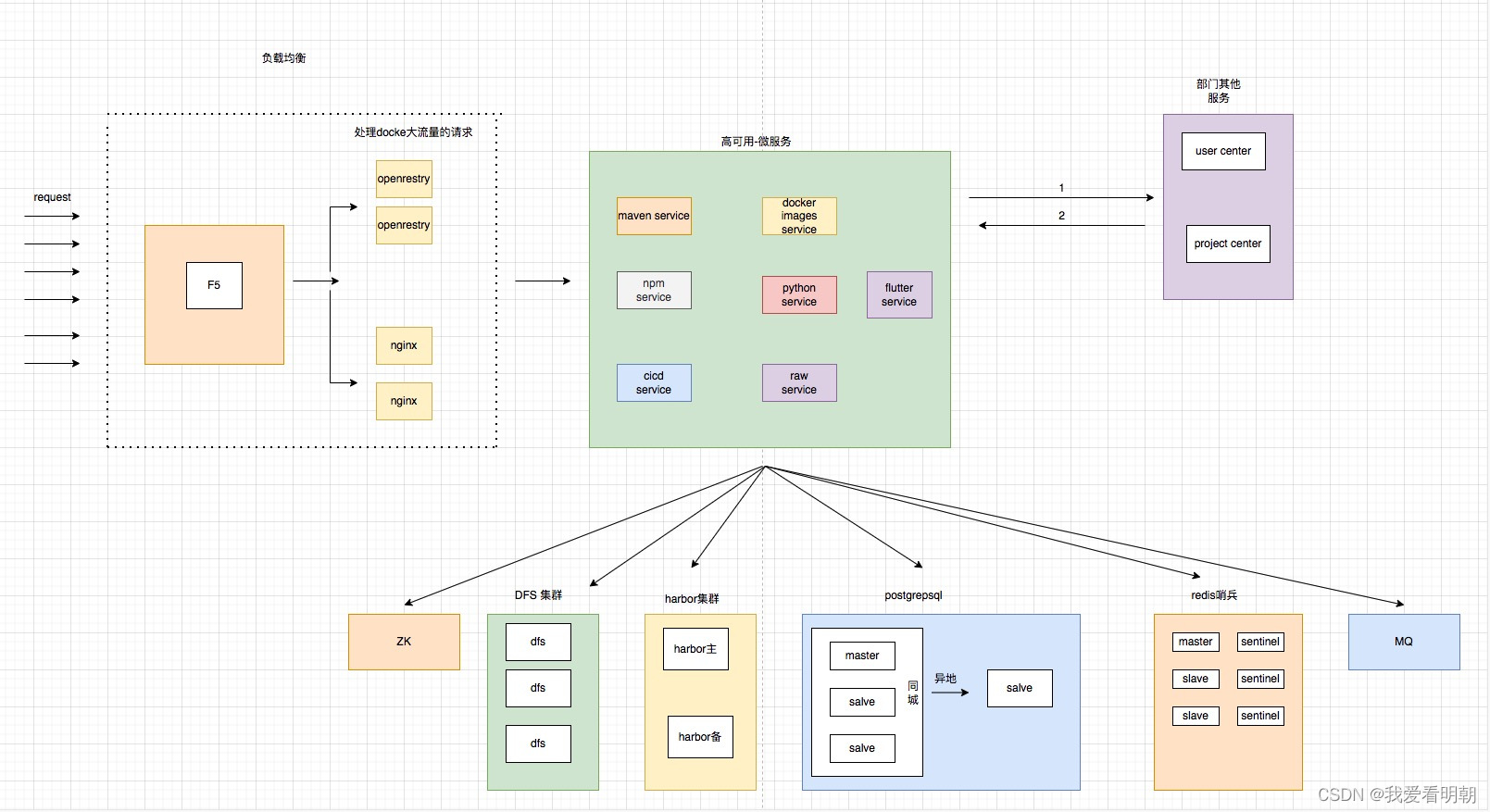
Some summaries of the third anniversary of joining Ping An in China

Online troubleshooting
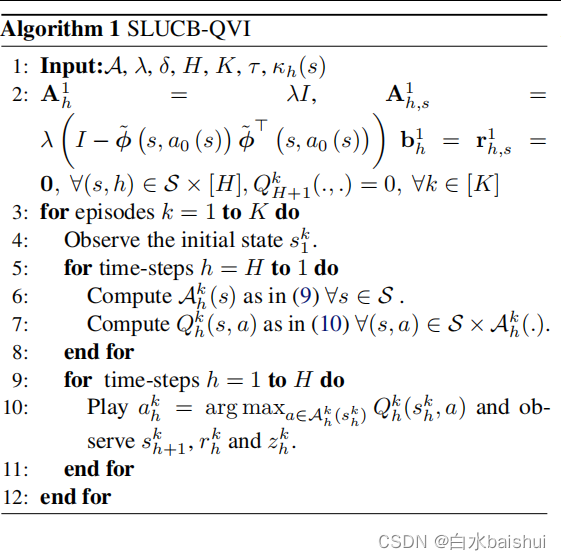
Safety reinforcement learning based on linear function approximation safe RL with linear function approximation translation 1
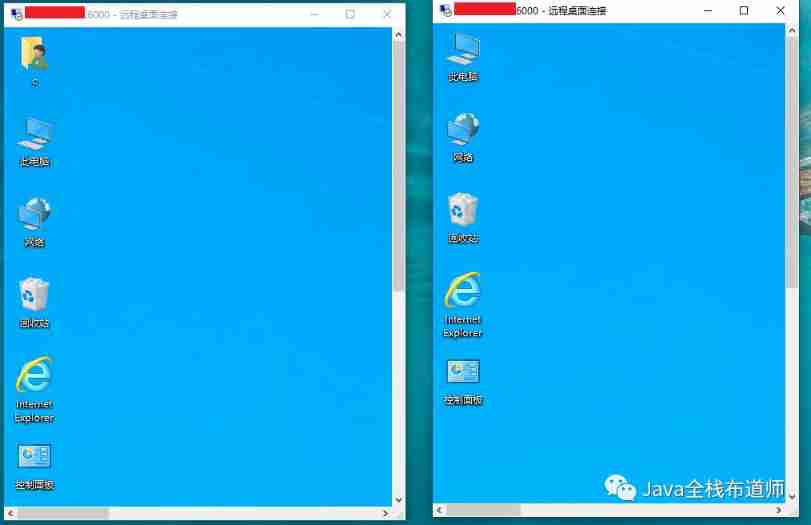
The most detailed teaching -- realize win10 multi-user remote login to intranet machine at the same time -- win10+frp+rdpwrap+ Alibaba cloud server

DDL statement of MySQL Foundation
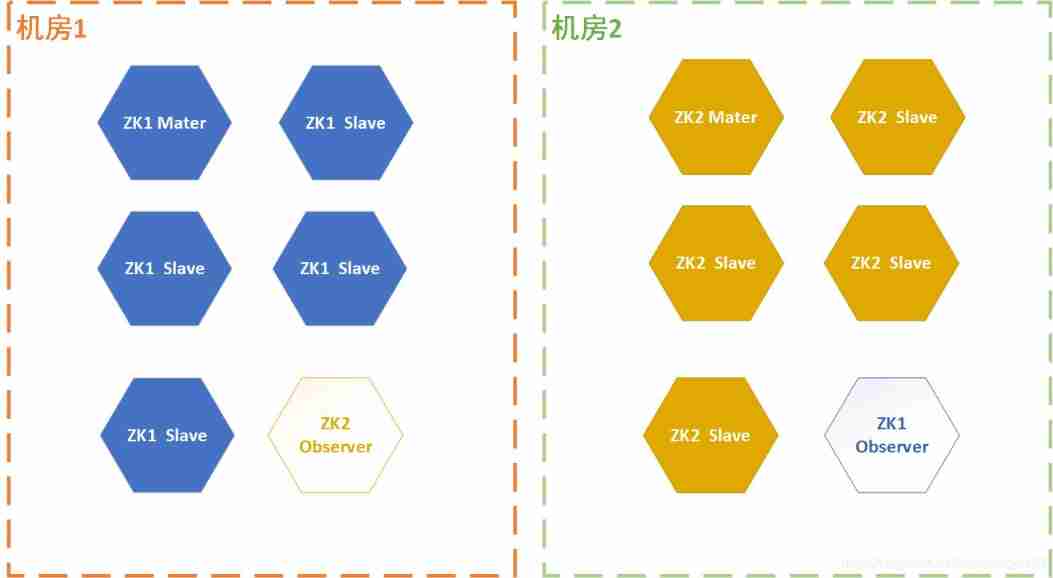
Three schemes of ZK double machine room
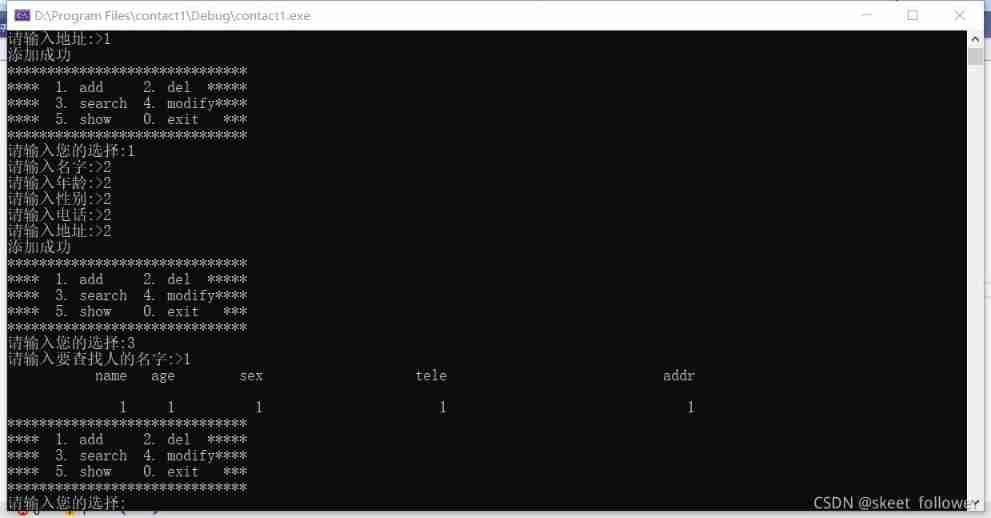
Dynamic address book
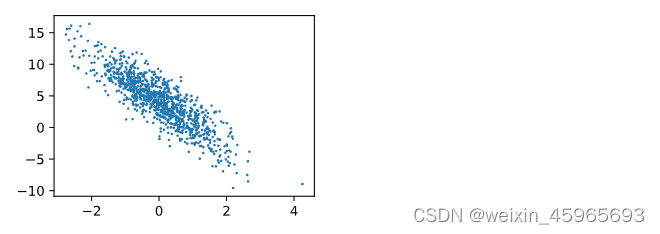
【Day1】 deep-learning-basics
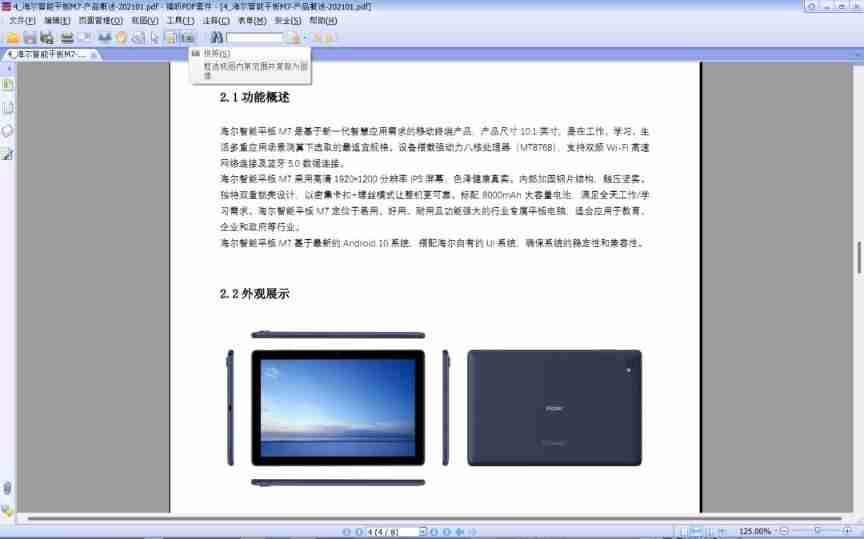
Software sharing: the best PDF document conversion tool and PDF Suite Enterprise version sharing | with sharing
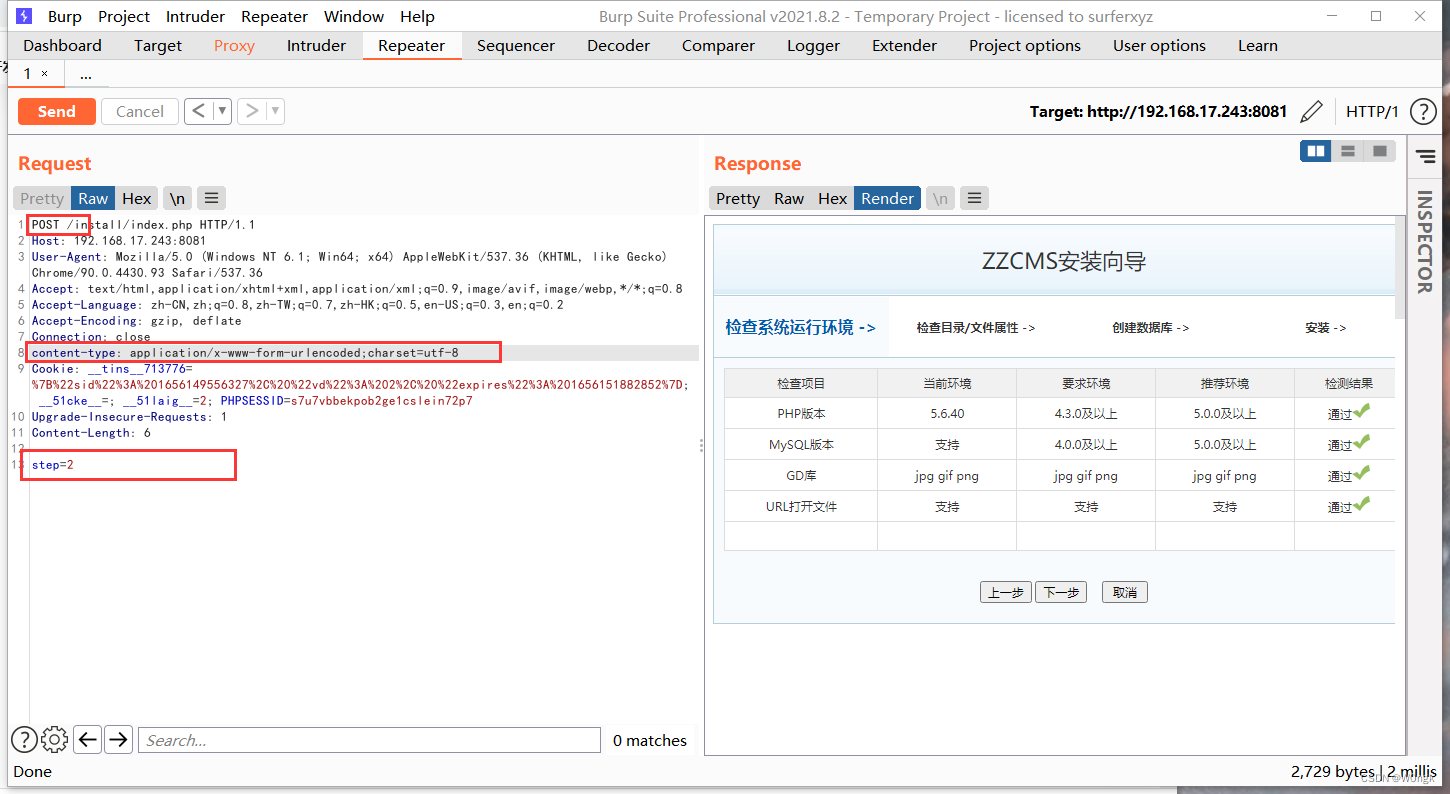
PHP代码审计3—系统重装漏洞
随机推荐
Introduction to extensible system architecture
Rhcsa day 10 operation
Batch distribution of SSH keys and batch execution of ansible
用数据告诉你高考最难的省份是哪里!
Linked list operation can never change without its roots
Four characteristics and isolation levels of database transactions
按键精灵打怪学习-识别所在地图、跑图、进入帮派识别NPC
DML statement of MySQL Foundation
Advanced technology management - how to design and follow up the performance of students at different levels
Whether a person is reliable or not, closed loop is very important
Doris / Clickhouse / Hudi, a phased summary in June
Knapsack problem and 0-1 knapsack problem
【Day1】 deep-learning-basics
MongoDB数据日期显示相差8小时 原因和解决方案
leetcode1229. Schedule the meeting
How do microservices aggregate API documents? This wave of show~
If you don't know these four caching modes, dare you say you understand caching?
AUTOSAR from getting started to mastering 100 lectures (106) - SOA in domain controllers
Differences among opencv versions
Three schemes of ZK double machine room